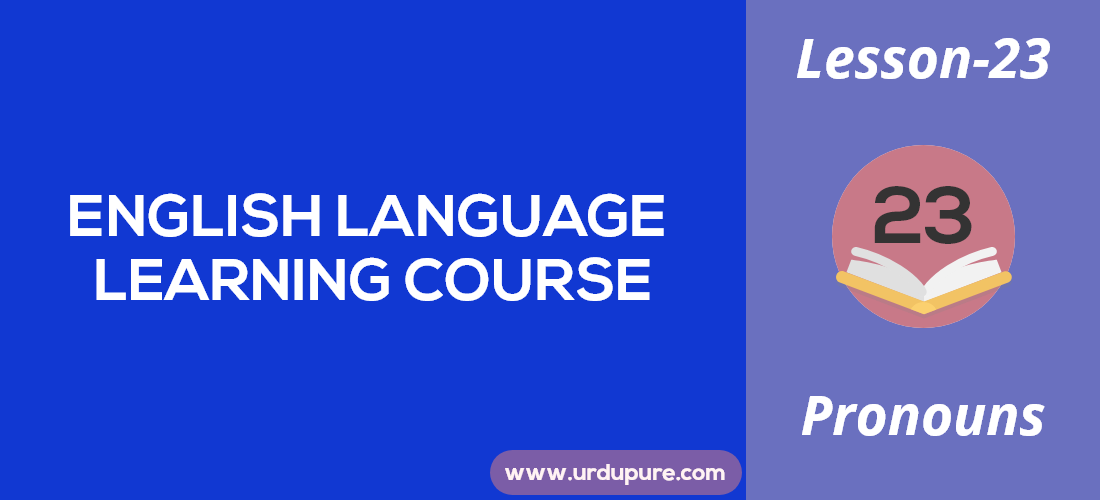Pronouns

Pronouns
You must have heard about words like ( I, She, he you, they, her, him, who, them, etc. ). We use such terms in our conversations. Our conversation is almost impossible and less informative if we don’t use such words. These are called pronouns.
Pronouns are words that are used instead of a noun . They are a subcategory of nouns, which can be substituted for nouns to avoid repeating the nouns.
For example: If you are telling something to your friend about your cousin Usman. It will sound repetitive if you keep on saying “Usman” again and again.
- Usman is doing CA from Canada. Usman has told me that Usman wants to live in Canada permanently.
Sounds repetitive, right? You can try to make it simpler by using pronouns instead of a noun (Usman).
- Usman is doing CA from Canada. He has told me that he wants to live in Canada permanently.
Now, this looks more structured and formal.
Types of pronoun
There are many types of pronouns. All of them have different usage in different places. The common thing is that all of them are used to replace a noun. Some of the pronouns belong to multiple types of pronouns.
1. Personal pronoun
Personal pronouns are a type of pronoun that takes the place of people or things. They can refer to one or more than one noun that’s why they can be singular or plural ( I, me, you, us, we, etc.)
Personal pronouns can be used either as the subject pronouns as a subject of the verb or object pronouns as the object of the verb within a sentence.
If you are referring to yourself in a sentence as a subject, you should use I.
- I saw many beautiful fishes in that aquarium.
If you are the object in a sentence, you should use me.
- Many beautiful fishes in that aquarium saw me.
Here is the list of personal object and subject pronouns.
Subject personal pronouns | Object personal pronouns |
I | Me |
You | You |
He | Him |
She | Her |
It | It |
They | Them |
We | Us |
2. Possessive pronouns :
Possessive pronouns refer to things that belong to people (noun). Like other pronouns, they can be singular (mine) or plural (ours).
Example:
- That bag is mine.
- That house is ours.
- Is that dress hers?
- That belt is yours.
Here is a list of possessive pronouns
Possessive pronouns | |
| His | Hers |
| Yours | Mine |
| Its | Ours |
| Theirs | |
KEY POINT: Don’t use apostrophes with possessive pronouns
- Your’s. (wrong)
- Yours. (correct)
3. Demonstrative pronouns:
The demonstrative pronoun is another type of pronoun. It refers to something already mentioned or the thing that is already in the reader’s or speaker’s surroundings.
Demonstrative pronouns are this, that, these, those.
Example:
- That is my car.
- This is your house.
- Those people over there are my friends.
- These are my pets.
4. Relative pronouns:
Relative pronouns are used to connect the relative clause with an independent clause. They provide additional information about the noun. A relative pronoun is the beginning of the clause. Vital relative pronouns are that, which, who, whom, what, and whose.
Example:
- I am going to the farmhouse that my friend owns.
Here that is a relative pronoun, which is the beginning of the clause “that my friend owns.”
5. Indefinite pronouns
Indefinite pronouns are another type of pronoun used when you refer to a noun without explicitly mentioning their name.
Some of the common indefinite pronouns are one, anybody, somebody, everybody, nobody, some, other, none.
Example:
- Everybody is getting late for work due to heavy rain.
- I don’t know anybody in this school.
- Some of us are going for a tour of northern areas.
6. Reflexive and Intensive pronouns
We use reflexive pronouns when the object and subject of the verb refer to the same thing or person. Reflective pronouns end in -self or -selves: myself, yourself, himself, herself, itself, ourselves, themselves.
Example:
- She hit herself accidentally.
Intensive pronouns are the same as reflexive pronouns, but their purpose is a bit different than reflexive pronouns. They add emphasis.
Example:
- Do you yourself see that thief?
Here you can also write, do you see that thief? But adding yourself emphasises that the writer wants to confirm whether you have seen him or not.
7. Interrogative pronoun
Interrogative pronouns are used to ask a question. Some of the common interrogative pronouns are who, whose, which, what, when, whom.
Who, whom, and whose are used in questions that involve people. Which and what are used for things. 'When' is used for place.
Example:
- Who are you talking about?
- Where are you going?
- Which of these bags is the best?
Conclusion:
In this lesson, we learned what pronoun and types of pronouns are. All of these pronouns’ fundamental purpose is to substitute a noun with some of the other functions.
}



